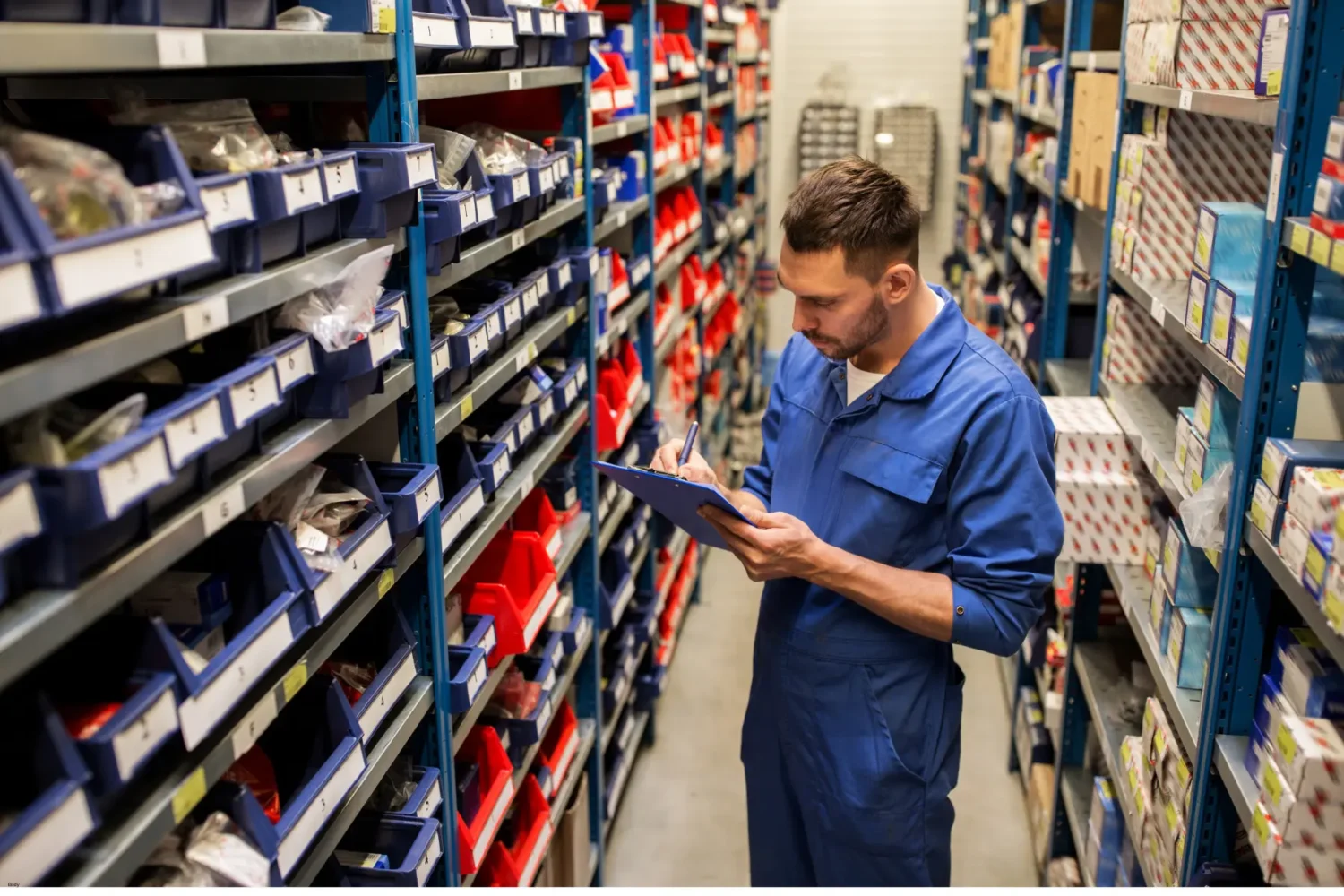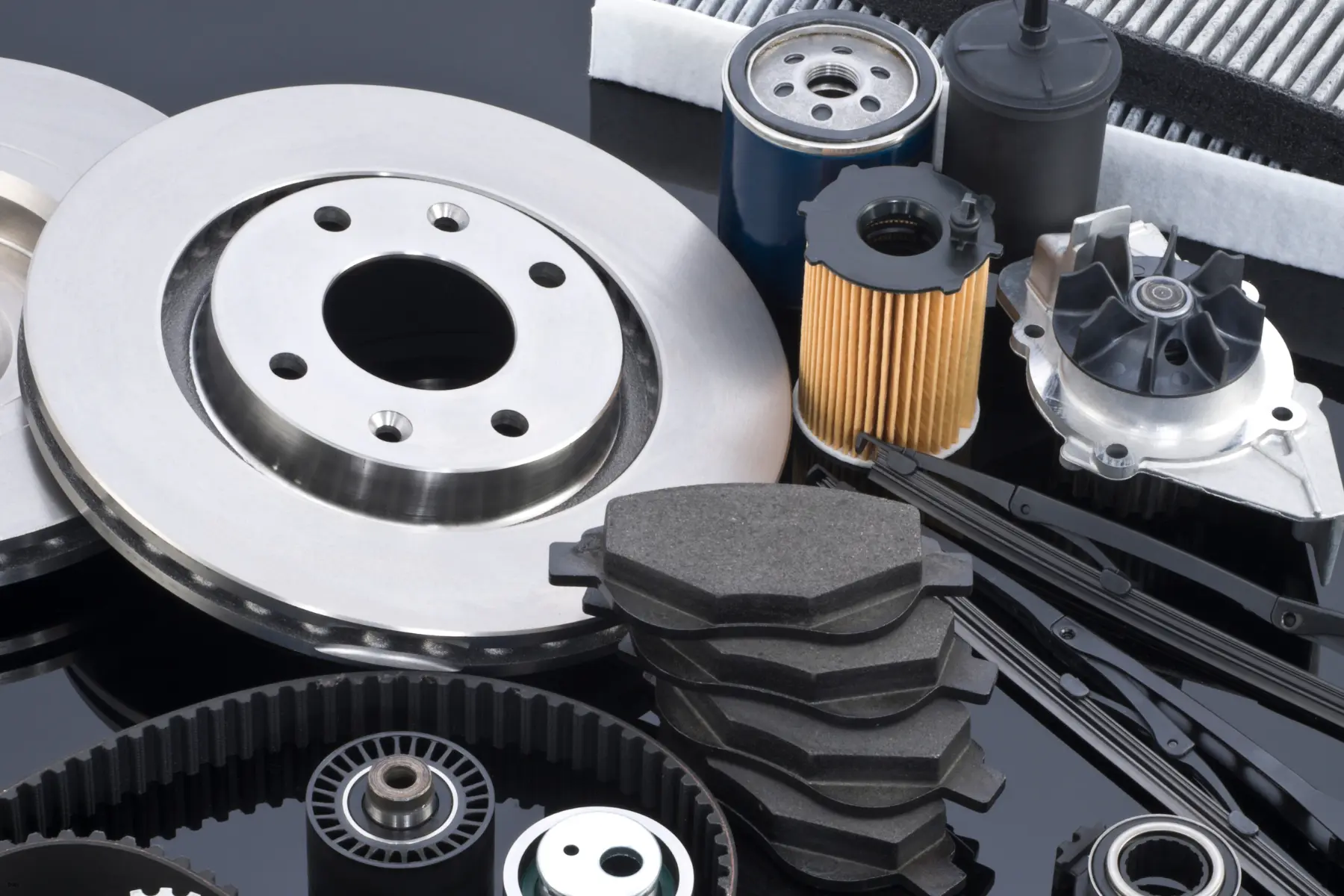Cars are complex machines composed of numerous automotive components, each essential for the vehicle’s optimal performance. From daily commuting to long-distance travel, the reliability of these vehicle parts and accessories directly impacts not just convenience but also safety. Understanding these components helps owners maintain their vehicles more effectively, potentially reducing the frequency and cost of visits to the mechanic. This knowledge is particularly beneficial when faced with decisions about repairs or upgrades, as it empowers vehicle owners to make informed choices regarding car repair parts and services.

Essential Car Repair Parts
Defining OEM Car Parts
Original Equipment Manufacturer (OEM) parts are those made directly by the vehicle’s manufacturer. They are designed to exactly match the parts that come with a vehicle when it’s first purchased. The use of OEM parts ensures that the fit, function, and quality are identical to the components originally installed. This can be particularly important for complex systems where precise coordination between various components is necessary. OEM parts generally come with a warranty from the manufacturer, providing an added layer of assurance when used for repairs or maintenance.
Aftermarket Car Parts
These are produced by companies other than the original vehicle manufacturer. These parts are usually designed to function similarly to OEM parts but often come at a lower cost, offering a budget-friendly option for auto spare parts. Aftermarket car parts can vary in quality, but many reputable manufacturers meet or exceed OEM specifications. They are popular among car enthusiasts and owners looking to customize or upgrade their vehicles beyond the standard specifications.
Automotive Brake Systems and Components
Brake Pads
Brake pads are crucial in the functioning of automotive brake systems, pressing against the rotors to create the friction needed to slow or stop your vehicle. They are among the most frequently replaced vehicle braking components due to their critical role and wear from regular use. Proper maintenance involves regular inspection for wear, listening for unusual noises like screeching or grinding, and ensuring they are replaced before they become too thin, which can compromise the vehicle’s safety and damage other brake components.
Rotors and Calipers
Rotors are large metal discs that sit inside the wheels. When the brake pedal is pressed, the calipers squeeze the brake pads against the rotors, slowing down the car through friction. The effectiveness of this system depends on the condition of both the rotors and the calipers. Any damage or wear can lead to reduced braking efficiency or increased stopping distances.
Importance of Brake Fluid
The force generated when a driver presses the brake pedal straight onto the calipers and subsequently to the brake pads needs to be transferred, and this requires brake fluid. It operates under high temperatures and pressures, which can degrade its quality over time. Ensuring that the brake fluid is at the correct level and replacing it according to the manufacturer’s guidelines are imperative for maintaining the efficiency of the brake system. A decrease in fluid quality can lead to spongy brake responses and reduced braking performance, highlighting the importance of regular fluid checks and changes.
Vehicle Battery Replacement and Maintenance
Role of Car Electrical Systems
These are integral to the operation of modern vehicles, powering everything from the ignition system to the headlights and infotainment systems. At the center of these systems is the vehicle battery, which supplies the necessary power to start the engine and stabilizes the power supply to keep the electronics running smoothly. A failing battery can lead to a variety of electrical problems, from dim lights and slow engine cranking to complete vehicle shutdowns.
Battery Maintenance for Cars
To ensure the longevity and efficiency of your vehicle’s battery, regular maintenance is essential. First, keep the battery terminals clean and free from corrosion, as buildup can impede the flow of electricity. Additionally, ensure that the battery is securely mounted and that the connections are tight to prevent unnecessary vibrations that could damage the internal components. It’s also advisable to have the battery and charging system tested during routine vehicle inspections to catch any potential problems early.
How to Check Battery Health
Monitoring the health of your vehicle’s battery is a key aspect of routine upkeep that can prevent unexpected failures and extend the battery’s lifespan. Here’s a detailed process to check the health of your battery:
- Visual Inspection: Begin by visually inspecting the battery. Look for any signs of wear or damage such as cracks in the case or any deformities. It’s important to examine the area around the terminals for corrosion, which can impair the connection. Also, ensure that all connections are secure and that the terminals are clean to prevent any potential starting issues. This step can help you catch problems before they worsen and require more costly interventions.
- Check the Voltage: The next step is to measure the battery’s voltage using a multimeter. A healthy, fully-charged car battery should have a voltage of about 12.6 volts or more. If your battery’s voltage is below 12.4 volts, it may indicate that the battery is undercharged or deteriorating. Regular voltage checks can help you maintain the battery in an optimal state and forecast when a replacement might be necessary.
- Load Test: Conduct a load test by applying a load similar to what the engine starter would require and then measuring the battery’s output. This test is crucial as it simulates real-life conditions under which the battery has to operate. A battery in good health should not drop below 9.6 volts during this test. It indicates that the battery can handle the car’s demands without faltering, ensuring reliability when you need it most.
- Hydrometer Test: If your battery has removable caps, use a hydrometer to check the specific gravity of the electrolyte solution. This test gives you a direct indication of the state of charge and overall health of the battery. The specific gravity readings should match the manufacturer’s specifications when the battery is fully charged. This test is particularly useful for maintaining the longevity and efficiency of the battery.
- Professional Evaluation: Lastly, consider getting a professional evaluation of your battery’s condition. A certified technician can perform detailed diagnostics, including tests to check the battery’s ability to maintain a charge over time and its capacity to store energy. Professional assessments can spot issues that might not be obvious from basic tests and can help you make informed decisions about battery maintenance or replacement.
Through these steps, you can measure the health of your battery and determine if any action such as charging or replacement is necessary. Regular testing not only extends the life of the battery but also enhances the reliability and performance of your vehicle.
Understanding Vehicle Suspension Parts
Symptoms of Worn Suspension Components
Identifying worn suspension components early can prevent more significant issues down the road. Common symptoms include a rougher ride, with every bump and hole in the road being more noticeable. Drivers might also notice excessive body rolls in turns, the vehicle “diving” during braking, or the rear “squatting” during acceleration. Unusual noises over bumps or turning maneuvers can also indicate problems with suspension parts.

Benefits of Suspension Upgrades
well-maintained and upgraded suspension offers not only smoother rides but also improved safety and control. This can be particularly important for those who drive frequently or in challenging conditions. Here are some benefits of investing in suspension upgrades for cars:
- Improved Handling: Upgrading to higher-performance shock absorbers and struts can dramatically improve your vehicle’s stability and handling. These components help to minimize body roll when cornering, increase stability at higher speeds, and enhance the overall control you have over the vehicle. For those who enjoy spirited driving or need reliable performance in varied driving conditions, these upgrades are essential. With better handling, your car responds more precisely to steering inputs and maintains better traction on the road.
- Increased Comfort: A superior suspension system absorbs the bumps and irregularities of the road more effectively, providing a noticeably smoother ride. This is especially beneficial if you frequently travel on rough, uneven roads or through areas with persistent issues like potholes or road debris. By upgrading your suspension, you can reduce the jarring and vibration that often lead to a fatiguing driving experience, making both short commutes and long journeys more comfortable.
- Enhanced Safety: Enhanced suspension components improve the tire’s contact with the road, which is crucial for maintaining control in adverse conditions such as rain, snow, or uneven surfaces. This improved road grip ensures that your vehicle remains stable and responsive when you need it most, thereby increasing safety for both the driver and passengers. In emergencies, a vehicle with an upgraded suspension can handle evasive maneuvers more effectively, reducing the risk of accidents.
- Reduced Wear and Tear: High-quality suspension parts help maintain proper alignment and balance of your vehicle, which in turn reduces the stress on other components, such as tires, brakes, and even the chassis. This can lower the frequency and cost of repairs and maintenance, extending the lifespan of these parts. Consistently good alignment also ensures that tires wear evenly, preventing premature replacement and improving efficiency.
- Customization: Suspension upgrades offer the flexibility to tailor the driving dynamics of your vehicle to your preferences. Whether you prefer a firmer, sportier feel for enhanced handling or a softer setup for maximum comfort, customizable suspension systems can accommodate these needs. This allows drivers to refine their vehicle’s performance characteristics to suit their driving style or the demands of the terrain they most frequently encounter.
By improving both performance and comfort, suspension upgrades not only enhance the pleasure and safety of your driving experience but also contribute to the overall value of your vehicle. Whether it’s about making your daily commute more enjoyable or ensuring your car performs optimally under all conditions, considering a suspension upgrade can be a worthwhile investment.
Car Suspension Repair
Knowing the extent of the damage requires understanding is crucial when it comes to auto suspension repair. Common issues might involve replacing worn shocks or struts, but it can also extend to more complex problems like correcting suspension geometry or replacing broken coil springs. It’s essential to address suspension issues promptly to avoid compromising vehicle safety and comfort.
Practical Advice on Sourcing and Purchasing Car Parts
Using Reputable Suppliers
When purchasing car repair parts, choosing reputable suppliers is essential for ensuring you receive high-quality components that won’t fail prematurely and can truly stand the test of time. Reliable suppliers often offer warranties on their parts, which can provide peace of mind and protection against defects. Additionally, reputable suppliers are more likely to have extensive, accurate catalogs and knowledgeable staff who can assist in finding the right part for your specific vehicle model, thereby ensuring compatibility and correct installation.
Avoiding Counterfeit or Substandard Products
The market is flooded with counterfeit and substandard products that can seem appealing due to their low cost but often lead to higher expenses in the long run due to poor performance and potential damage to your vehicle. To avoid these pitfalls, it’s important to purchase parts from authorized dealers or directly from the manufacturer whenever possible. Always check product reviews and ratings, and be wary of parts that are significantly cheaper than those offered by well-known brands—they are often too good to be true.
Local Auto Parts Stores vs. Online Retailers
Local stores offer the advantage of personal service and the ability to physically inspect parts before buying. They also provide the opportunity for immediate purchase without the wait for shipping, which is crucial in urgent repair situations. Online retailers, however, often have a broader selection of parts and potentially lower prices due to reduced overhead costs. As mentioned before, they also offer customer reviews and ratings, which can help in making informed decisions.

Understanding the intricacies of car parts and their maintenance is crucial for any vehicle owner. Knowledge of components like OEM and aftermarket parts, along with a grasp on the essentials of automotive systems such as brakes and batteries, empowers owners to make informed decisions about their vehicle’s upkeep and repairs. This not only ensures the longevity and optimal performance of the car but also contributes to overall road safety and efficiency. Moreover, by opting for quality car brake repair parts from reputable suppliers and avoiding substandard products, car owners can prevent future problems and unnecessary expenses. Whether you choose to purchase parts locally or online, prioritizing quality and reliability in your selections will maximize the vehicle’s lifespan and ensure a safer, smoother driving experience. By embracing both proactive maintenance and informed purchasing strategies, car owners can significantly enhance the functionality and reliability of their vehicles, making every journey more enjoyable and worry-free.




